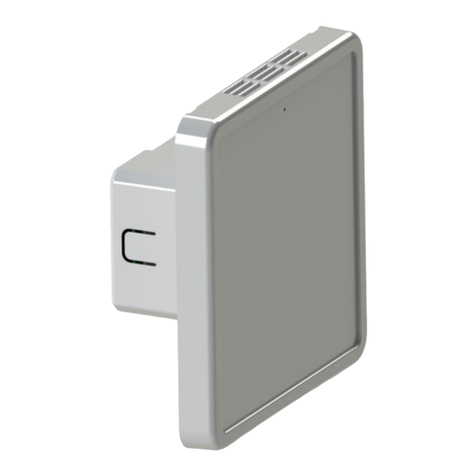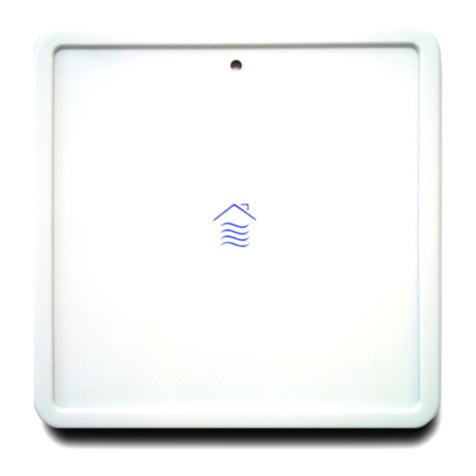Guide d’Installation sonde E4000 E4000 probe Installation Guide
www.nano-sense.com All Rights Reserved Tel : 33 (0)1 41 41 00 02 page 10/22
7.2.4.1. Pairing
In order to send the measured values or commands to actuators, it is necessary that the probe to be
paired with one or more actuators. This is achieved through "the LCD tools" temporarily mounted on
the probe. Details are described in the document “Setting the E4000 air quality probe in EnOcean sensor
mode”
Beside, for temperature control, EnOcean sensors can be associated with the E 4000 probe (Ex: window
handle to turn off the heating when open, presence sensor or card to switch to ECO mode)
7.2.4.2. Telegram Transmission Principle
In EnOcean sensor mode
The probe sends a telegram of a different profile every 5 seconds (if paired).
Without annex probe, the E4000 probe is sending 5 telegrams (1 for ventilation control, 1 for CO2 +
Temperature & Humidity, one for VOCs, 1 for heater control, 1 for cooling control) so a 25 to 30
seconds cycle.
Telegram emissions are not conditioned by changes of measures because emission rate is enough vis-à-
vis the HVAC.
This rate is not adjustable.
In EnOcean gateway mode, the probe sends telegrams according to events.
7.2.4.3. Description Radio Telegram
In EnOcean sensor mode
EnOcean profiles:
The following telegrams are sent:
• Controls for ventilation (Bi Directional) (EEP 4BS: A5-20-02)
• Or Commands for continuous ventilation (uni-directional) (EEP RDS: F6-02-01)
• Or Commands for single-speed ventilation (ON/OFF) (EEP RDS: F6-02-01)
• Or Commands for Two-speed ventilation (ON/OFF) (EEP RDS: F6-03-01)
• And CO2, Humidity and temperature Measurements (EEP 4BS: A5-09-04)
• And VOCs Measurement (EEP 4BS: A5-09-05)
And for temperature heating control:
• Control valve battery operated (Bi Directional) (EEP 4BS : A5-20-01)
• Or Control valve Basic (Bi Directional) (EEP 4BS : A5-20-02)
• Or Control valve wired (Bi Directional) (EEP 4BS : A5-20-03)
• Or Control Generic HVAC Interface (Bi Directional) (EEP 4BS : A5-20-10)
• Or Temperature (setting + measure) (EEP 4BS : A5-10-03)































